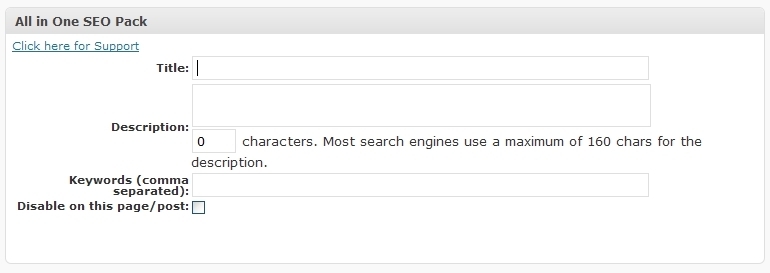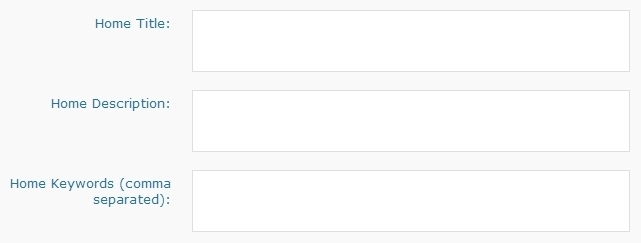Boy, I really hate it when this happens. Some *guru* will state something like “Install All In One SEO and you will be instantly found by Google”. What a load of horse-manure.
Let me correct this terrible misconception, before it destroys some small business blogger’s dream.
First and foremost, All In One SEO (AIE SEO) is a great plugin. I don’t want this post to sound like I am dissing the plugin itself. Only the guru’s accidental (?) misconception. Installing it or something like it is Step 1.
Step 2 is to actually use it.
The power of AIE SEO (Headspace, WordPress SEO, etc) lies in it’s ability to override WordPress’s default behavior, and allow you to:
However, you have to actually complete those fields. Once installed, AIO SEO add’s a new set of fields to the bottom of the *Add New Post* page like the one shown below:

If you will take the time to complete those three fields, you make Google’s job of serving your content to searchers, based on keywords, easier and more reliable. You do want to get found, right?
Remember this is going into the Browser Window Title, not the Post Title. [The Post Title is displayed at the top of the content area] It should contain the Post Title, as well as your tag line, or site name, or a fuller explanation of the benefit stated in the post. This is also what Google uses when displaying the link to your post/page. This should be human readable as well as spider readable.
Example:
- Post Title: 7 Strategies To Improve Your Blogs SEO
- Browser Title: SEO Training : 7 Strategies To Improve Your Blogs SEO
Once your post/page reaches the point that Google will serve it up when a searcher types in a keyword, you want a hand-crafted description visible. You only have a few seconds to reach out and grab your potential reader by the throat and convince them that clicking your link will give them the answer they are looking for.
Your description should be meaningful to the content, contain the primary keyword at least once, and convince the searcher that clicking on the link will deliver them the solution/benefit stated.
Search engines will cross reference the keywords in the Keyword Meta Tag against the content being served, and the keywords used in the searchers request. Obviously, they should match.
A word of warning. Don’t include keywords that aren’t in your post, or inferred by your content. If your post is about gardening on a rooftop, don’t include the keyword “SEO Strategies”. It will confuse Google and limit the benefit of any of your keywords.
Normally, the home page of your small business blog contains the “Site Name” only. Sometimes just the URL. Zero benefit to you from an SEO standpoint. AIO SEO contains a settings page where you can define your Home Page’s Browser Title, Description Meta Tag and Keyword Meta Tag.
You should spend a couple of minutes completing these three fields as well. (Just the one time, unless you decide to make a change later).

Like everything else in life, there is no single magic bullet to SEO and getting your small business blog found by the search engines (and therefore by your potential customers or readers).
You have to work at it.
This particular technique only takes an extra couple of minutes on each post, but the long-term benefits are enormous. Do yourself a favor… if you have AIO SEO installed, use it. If not, go get WordPress SEO, All in One SEO, or Headspace2
AIO SEO is a great plugin for SEO benefits, but I found a better one, depending on your overall site needs. Please check out my video and post Headspace2 Tutorial: Exploring SEO Through Plugins.